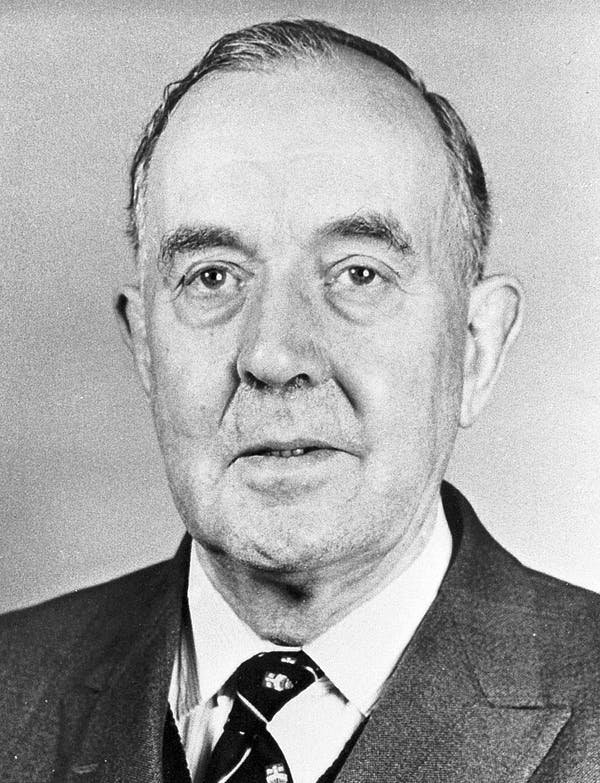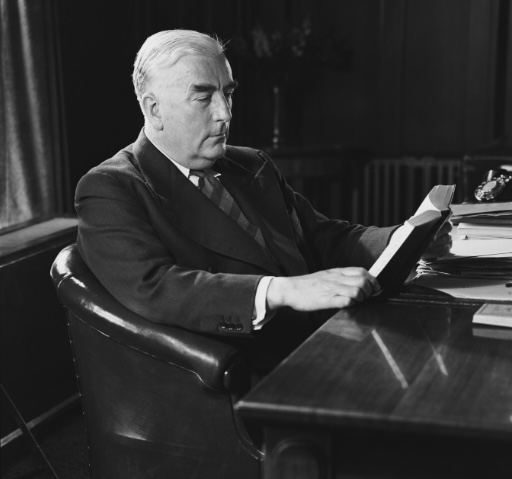On this day, 28 November 1957, Robert Menzies revolutionises Australia’s tertiary education system by announcing that he is adopting in full the recommendations of the Committee on Australian Universities, known as the Murray Report. In doing so, Menzies saved Australia’s universities from a funding crisis that threatened their very existence. He would later state that leaving the universities in a healthy state was one of his proudest achievements, indeed one which made all the struggle and criticism of a political career worthwhile.
University education had originally been a responsibility of the States, with Australia’s first universities predating Federation and in some cases even responsible government. However, with the post-war baby and immigration booms State education budgets were increasingly being eaten up by the need to build and staff new schools to accommodate an ever increasing population. Adding to this was Menzies’s introduction of Commonwealth Scholarships, allowing many who could not afford a university education to receive one on a merit basis, which had helped produce a situation in which university student numbers had more than doubled.
The Commonwealth Government had earlier committed to some funding of universities through the Commonwealth Reconstruction Training Scheme, but this was tied to the needs of post-war reconstruction and promises which had been made to returning soldiers. As this funding wound up, the universities were left in an increasingly precarious position.
Menzies had offered some funding to universities from the early days of his second prime ministership, but his commitment to States’ rights meant that he wanted the States to continue to be the major backers of tertiary education and to hold the reins of tertiary governance. Eventually the extent of the funding crisis, a concerted lobbying effort from the universities, and even a private dinner at University House in Melbourne changed Menzies’s mind.
In 1956 he announced the appointment of a new inquiry into universities, to be led by the chair of the United Kingdom’s University Grants Committee, Sir Keith Murray. The report this inquiry subsequently produced recommended that £22 million be granted to universities over the next three years as an emergency measure, proposed ways to cope with the projected expansion of students over the next decade, such as providing Commonwealth funds for new buildings and equipment, including residential colleges; and suggested that a permanent committee be established to advise on university policy and development.
Menzies was now an enthusiastic supporter of the reform movement, and it took just three days from the report’s release for him to announce that he was adopting it in full. By 1959 the funding had been legislated and the new Australian Universities Commission had been established. The transformation these measures put into motion would be immense. By 1972, the year the Coalition finally lost office, 9 universities had become 15, the number of academics had more than tripled with 274 professors growing to 853, and student numbers increased from 37,900 to a staggering 128,700.
Menzies had always had a great passion for universities from his student days, and he put great store in the value of a broad liberal education as something that was infinitely necessary if future national and cultural leaders were to guide Australia down the correct path. However, that belief had been significantly strengthened by the Cold War and the need to defeat ‘Godless’ materialism. In an address marking the centenary of the University of Sydney in 1950, Menzies said:
‘This is an age of increasing cleverness, but not of increasing learning or wisdom. The contest of our time is between true values and an easy shoddy substitute. The true function of the University is to get its values right, and those of the public. There are those that believe that aeroplanes and scientific gadgets are the proof of civilisation. Civilisation exists in none of these things, they are mere instruments. True civilisation lies in the heart and spirit of man.’
At the first annual Robert Menzies Institute Conference, Professor Gregory Melleuish argued that Menzies saw the universities as the successor to the Church in an increasingly pluralistic, if not yet necessarily atheistic, age. By this he meant that the universities would be the moral lodestar of society, upholding higher values and purposes over the everyday desire for basic pleasures, and averting the danger that society’s purpose might be reduced to felicific calculus.
Whether Australia’s universities have lived up to this noble intent is a matter for debate, but through his adoption of the Murray Report and other initiatives, Robert Menzies gave them every assistance that he could in order that they might do so.
Further Reading:
Gwilym Croucher and James Waghorne, Australian Universities: A History of Common Cause (UNSW Press, 2020).
Gregory Melleuish and Stephen Chavura, ‘The Idea of Education According to the Young Menzies, 1916-1945’, RMI 2021 Conference Paper, publication pending.
G.E. Sherington, ‘Murray, Sir Keith (1903–1993)’, Australian Dictionary of Biography, Volume 19, 2021.
Sign up to our newsletter
Sign up for our monthly newsletter to hear the latest news and receive information about upcoming events.


